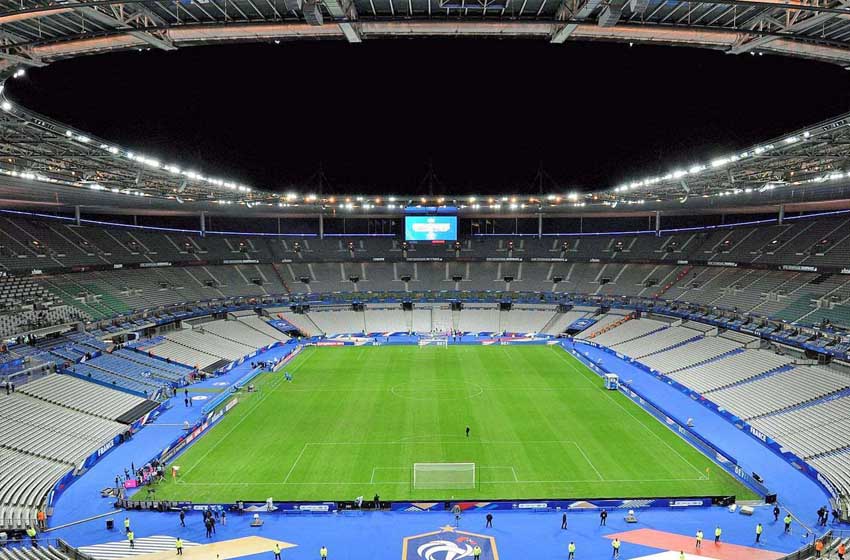
Stade de France
Stade de France, a name that resonates with sports enthusiasts and concert-goers alike, stands as a monument to athletic prowess, cultural expression, and architectural innovation. Located in the heart of Saint-Denis, just north of Paris, this iconic stadium has not only served as a battleground for some of the world’s most significant sporting events but has also hosted unforgettable concerts and performances that have shaped the landscape of entertainment in France and beyond. As we delve into the rich tapestry of the Stade de France‘s history, significance, and hidden secrets, you’ll uncover why it remains a cherished landmark in global culture new 88.
Introduction to Stade de France
As one of the premier sports venues in the world, the Stade de France has made a profound impact on both local and international stages.
This grand structure is more than just a stadium; it’s a symbol of unity, pride, and resilience for the French people. With an impressive seating capacity, it has played host to an array of significant global sporting events, including the FIFA World Cup and UEFA Euro tournaments. Additionally, its versatility has allowed it to accommodate concerts by some of the biggest names in music, making it a cultural hub in its own right.
Beyond its physical presence, the Stade de France holds a unique place in sports history. Its construction marked a pivotal moment in France’s approach to sports infrastructure, setting standards that many countries would aspire to replicate. But what truly distinguishes the Stade de France from other arenas around the world is not just its size or the events it hosts. Nestled within its walls are stories, legends, and a hidden secret that adds depth to its legacy.
The History and Evolution of Stade de France
The narrative of Stade de France is intertwined with the evolution of modern sports architecture and the growing prominence of France in the global sporting arena.
Origins and construction – Why it was built and its architectural marvel
The decision to construct the Stade de France emerged from a desire to create a national stadium capable of hosting major international sporting events. The vision was clear: a multipurpose venue that reflected the innovative spirit of France while providing state-of-the-art facilities for athletes and fans alike.
Designed by the renowned architect Michel Macary, the stadium was inaugurated in 1998 as part of France’s preparations to host the FIFA World Cup. Its design is characterized by a striking elliptical shape, with a roof that can open and close, allowing it to adapt to various weather conditions and events. This architectural feat showcases the ingenuity of French design, seamlessly blending functionality with aesthetic appeal.
From the outset, the Stade de France was envisioned as an inclusive space, designed to be accessible for everyone, regardless of their background or physical capabilities. This ethos of inclusivity has remained a cornerstone of its identity, contributing to its enduring popularity among diverse audiences.
Major events hosted – World Cup, Olympics, and concerts
Since its opening, the Stade de France has hosted an impressive lineup of key sporting events. The highlight came in 1998 when it held the FIFA World Cup final, where France triumphed over Brazil, securing its first World Cup victory on home soil. This monumental moment solidified the stadium’s reputation as a hallowed ground for football.
In addition to football, the Stade de France has been a prominent venue for rugby matches, serving as the home ground for the French national rugby team. The electric atmosphere during Six Nations Championship games is something every sports fan should experience, with passionate supporters filling the stands and creating an unforgettable ambiance.
Beyond sports, the Stade de France has opened its doors to an eclectic range of musical acts. From legendary performances by artists like Madonna and U2 to the electrifying energy of rock concerts and festivals, the stadium has become synonymous with world-class entertainment. Each event leaves an indelible mark on the fabric of the stadium’s history, turning it into a cultural melting pot.
Renovations and modern upgrades – How it stays relevant over time
To maintain its status as a leading venue, the Stade de France has undergone several renovations since its inception.
These upgrades have been crucial in enhancing the spectator experience, ensuring that attendees enjoy modern amenities while still feeling the thrill of live sporting events and concerts. Technological advancements have been integrated into the stadium’s infrastructure, with improved sound systems, high-definition screens, and enhanced seating arrangements that cater to a variety of preferences.
